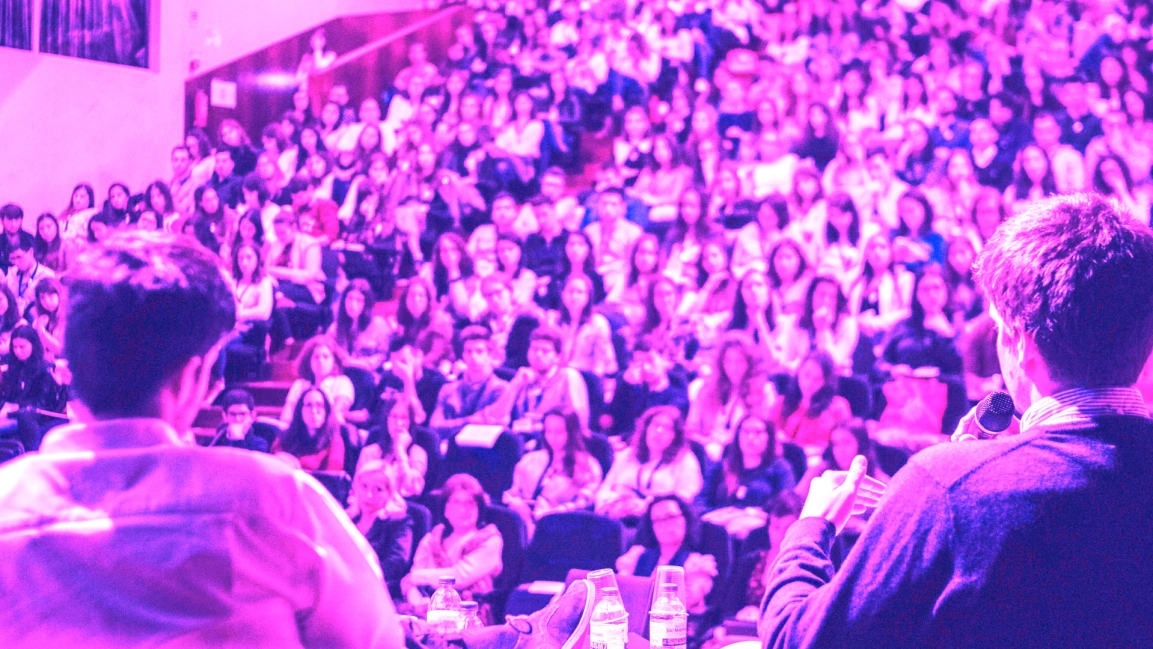5 things you can do to make your conferences diverse and inclusive
Sometimes, I think I should update my LinkedIn job title to “Manel Preventer” which stands for all-male panels preventer. Several times a year, I get requests to participate on a panel of all men at a big conference. It happens in both of my core fields: national security and technology. It happens even when I am not the best person for the job (I know nothing about FinTech, for example, and still get asked to speak on it again and again). Most of the time, I get asked to moderate the panel of male experts (which I usually turn down.)
When I founded an incubator training technology experts on how to do policy, I was warned that I would have a hard time avoiding a similar problem: creating a “mellowship” or all-white male fellowship (Yes, I just coined that term). People told me things like women and minorities wouldn’t be interested in applying to a full-time program. Supposedly, they wouldn’t be able to take the time given family and personal responsibilities. But the most eye-rolling (and sadly unsurprising) comment of all is that they wouldn’t be qualified compared to their male engineer and startup founder counterparts.
Yet, when we launched our first cohort earlier this summer, the mellowship did not come to fruition. We only had three white males in the group—everyone else was a woman, a person of color, or both. While we’re not quite ready to reveal them yet, we can state with confidence our next class will have a similar profile.
We didn’t reach this outcome by elevating specific populations over other qualified candidates. We worked hard to create a fair system, stuck to it, and it worked. Here’s what we learned in the process.
1. It’s important to spread the word
Conferences and fellowships are network-driven. When you think of speakers and facilitators, chances are you’ll probably think of people you already know. But people also tend to know and invite people most like themselves. If you want a diverse participant group, you need to recruit in less familiar circles.
That’s what we did for our fellowship. We reached out to people we didn’t know to apply or encourage others to apply. We asked diverse Twitter personalities to tweet us out, emailed affinity groups, and asked for opportunities to get on podcasts that weren’t hosted by white men.
Too often, companies limit recruitments for speaking spots through existing networks. Think about making an open call before finalizing your speaker set. When you open it up, you’ll be surprised at how many qualified individuals there are with different perspectives to yours.
2. You need to consider diversity from the get-go
In fellowships and conferences alike (at least those with application processes), diversity is usually an afterthought. But asking directly about it not only helps you better understand your applicant pool. You’re giving a signal to underrepresented groups that their perspective is valuable.
We put diversity front and center on our application through an open-ended question about how our applicants would foster diversity through their experiences and beliefs. We scored it just like we would any other essay, so it counted in the final grading of our applicants. This allowed us to learn about the social groups into which applicants identified, as well as their beliefs and experiences.
We learned about diversity categories that we hadn’t thought of, such as disability and political background. And we also got a sense of who wouldn’t care about diversity from their answers, which was necessary for the chemistry of the group we were building. In our experience, those who lacked interest in engaging diverse candidates aren’t always receptive to fostering fellowship camaraderie.
3. It’s crucial to anonymize as much as possible
Bias seeps into every aspect of review processes, which is why many review systems prize anonymity. But at the same time, people matter. In a fellowship or conference panel, you don’t want everyone to bring the same perspectives. We solved this problem by using partial anonymity.
All of the essay questions in our application are scored first and anonymously (usually on a 1-5 scale). Then we separately reveal the applicant and grade their background on the same scale. The program we use, Screendoor, even allows us to weight the answers on the backend so we can give more emphasis to the most critical questions.
4. You need to standardize interview questions, and then score them
Interviews are an essential part of any review process for a selected position. In this instance, anonymity is not an option. To prevent bias, you need to standardize the interview questions.
For us, we use a standard set of questions to test for characteristics we can’t get from the written work. These include expressed passion, humility, and clarity of thought. We score interviews on a parallel scale, like the written answers, so both count equally. We then plug the top scorers into a spreadsheet designed to create a good mix of fellows and make a few small adjustments like prioritizing a candidate who could only do that cohort.
5. Don’t forget to create meaningful opportunities
Last but far from least, diverse candidates want to participate in opportunities that have meaning—for themselves, for their communities, and for the world. That’s why it’s on you to provide the value proposition: why should they want to do what you are asking them to do?
You won’t get diversity by just promoting it. You need to provide meaningful engagements that everyone—regardless of their background—can get behind.
Betsy Cooper (@betsontech) leads the Aspen Tech Policy Hub; she previously served as the founding executive director of UC Berkeley’s Center for Long-Term Cybersecurity and as an advisor at the Department of Homeland Security.
(14)



